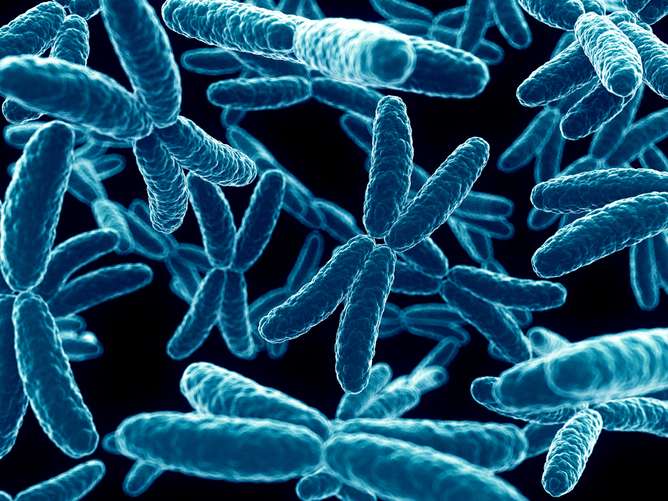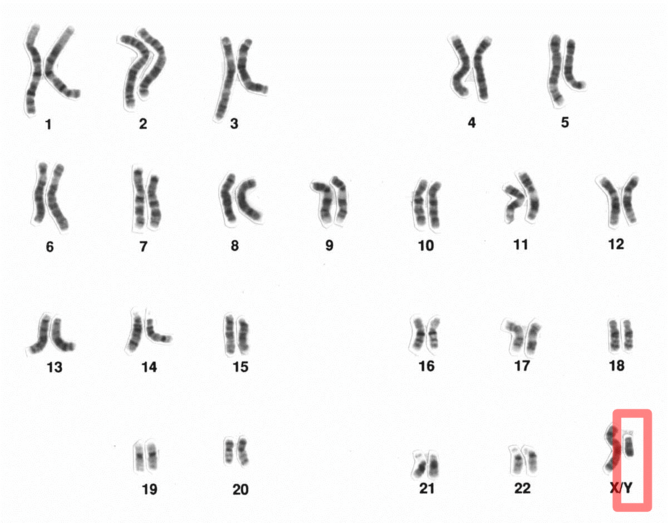The X-chromosome at some point evolved to be different from all other chromosomes.
You may not be aware of it, but one of your chromosomes – the X chromosome – is considerably different from the rest and has posed a puzzle for scientists for over a decade. Early in mammalian evolutionary history, what is now the X chromosome was just like any of our other chromosomes. But at some point it evolved to be different.
Unlike all other chromosomes, one of the two X chromosomes in women is inactivated in nearly all cells. It also has an extremely low mutation rate and – most perplexingly – the genes that are found on it are active in relatively few of our tissues. Now a study we recently published in PLOS Biology, has begun to shed light on what's going on – by using a traffic analogy.
Battle of the sexes
In humans, each cell normally contains 23 pairs of chromosomes. Only one of these pairs – the sex chromosomes – differs in men and women. If you are biologically a woman, you inherited one X chromosome from your father and one from your mother. If you are biologically a man, you inherited one from your mother and a Y chromosome from your father.
Like all other chromosomes, the X chromosome carries genes that are used to create proteins that go on to produce observable traits. This happens through the process of transcription, in which a single strand copy of the DNA is made, which is then decoded into a protein. When a gene is processed like this it is said to be "expressed". Essentially, gene expression interprets the genetic information stored in DNA, converting it into traits.
The 46 chromosomes of a man. Women differ by having an X chromosome where the Y chromosome is. Credit: National Human Genome Research Institute
In the 1980s a study predicted that the genes on X chromosomes should be prone to evolve to be switched on in only one of the two sexes, making them different. This could explain certain biological differences between women and men (the study looked specifically at the difference in the size and shape of horns in bighorn sheep). And when new mutations happen on X chromosomes their effects in women are subject to selection twice as often as their effects in men. So a mutation that is beneficial in women but harmful in men could nonetheless persist.
But this doesn't really explain why the genes on our X chromosome are not expressed in as many tissues as other genes. Looking at the human gene atlas that is FANTOM5, we found this trend to be true even after genes expressed in sex-specific tissues (like the womb, testes, ovaries) are taken out of the equation.
Our study tested an alternative possibility – the idea that it is hard to increase the amount a gene is expressed on the X chromosome. To express a gene we need other proteins, known as transcription factors. These proteins stick to the DNA in the vicinity of genes and function like "on switches". To increase expression requires increasing the amount of these proteins that stimulate the expression by binding to that gene. But on the chromosome in men, these proteins can only bind to one site rather than two. And in women one of them is deactivated.
For similar genes on our other chromosomes there are two sites that can be activated in parallel if expression at a fast rate is needed. For example, in the cells where we need haemoglobin to carry more oxygen from the respiratory organs to other organs, the genes that produce it can be expressed at a higher rate than any other gene in any other tissue or cell. The X chromosome, however, is like a one-lane road that carries less traffic on it at peak periods than a two-lane road – leading to gene expression traffic jams.
Traffic jams
It’s hard to speed up a traffic jam. Credit: US Census Bureau/wikimedia
We expected that, when peak traffic rates are high, genes on the X chromosome will have a problem. And our statistical analysis revealed that, as expected, peak traffic flow rates on your X chromosome are under half that of your other genes.
Moreover, genes that have moved from the X to the other chromosomes over evolutionary time and those that have gone the other way are different: the ones moving onto the X chromosome have much lower peak rates of expression that those making the reverse trip. And the more highly expressed genes on the X chromosome are less prone to increasing their expression level over evolutionary time than are other genes. It is hard to speed up when you're in a single lane traffic jam.
The same traffic jam idea also explains the old mystery of why genes on your X chromosome are expressed in few tissues. Genes expressed in many tissues tend to be genes with very high peak rates of expression. According to the traffic jam model, really highly expressed genes cannot function on the X chromosome and indeed, as the X chromosome evolved, there seems to have been an exodus of such genes away from the X. Similarly, tissue-specific genes with very high peak expression are not found on the X chromosome. Tissues associated with very high peak traffic flow rates – for example tissues with very active secretion such as our pancreas – are also those in which X-linked genes tend not to be expressed.
These results suggest that to understand how our genes and chromosomes evolve we might need to think more about simple limitations of the physical systems they live in at a starting point, rather than only investigating the genetic basis for biological sex differences.
There are also some practical applications from this research. When it comes to gene therapy, for example, in which we artificially introduce a new version of a gene to compensate for a mutated version, we should probably avoid inserting it on the X chromosome if possible, as it may be hindered from being expressed properly.
Journal information: PLoS Biology
Source: The Conversation
This article was originally published on The Conversation. Read the original article.
![]()


























